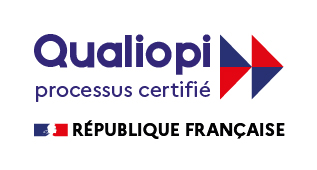Operating cash flow—also referred to as cash flow from operating activities—is the first section presented on the cash flow statement. Operating cash flow (OCF) is a measure of the amount of cash generated by a company’s normal business operations. The CFS is distinct from the income statement and the balance sheet because it does not include the amount of future incoming and outgoing cash that has been recorded as revenues and expenses. Therefore, cash is not the same as net income, which includes cash sales as well as sales made on credit on the income statements. Cash from financing activities includes the sources of cash from investors and banks, as well as the way cash is paid to shareholders. This includes any dividends, payments for stock repurchases, and repayment of debt principal (loans) that are made by the company.
This $1,000 will be recorded on your profit and loss statement as a profit—even if you don’t receive payment for said invoice right away. It means that the business is profitable and that companies have the ability to grow and reinvest as needed with positive cash. By studying the CFS, an investor can get a clear picture of how much cash a company generates and gain a solid understanding of the financial well-being of a company. The same logic holds true for taxes payable, salaries, and prepaid insurance. If something has been paid off, then the difference in the value owed from one year to the next has to be subtracted from net income.
- Operating cash flow indicates whether a company can generate sufficient positive cash flow to maintain and grow its operations, otherwise, it may require external financing for capital expansion.
- But because FCF accounts for the cash spent on new equipment in the current year, the company will report $200,000 FCF ($1,000,000 EBITDA – $800,000 equipment) on $1,000,000 of EBITDA that year.
- Cash inflow is incredibly important because it is how revenue and profit is generated.
- Changes made in cash, accounts receivable, depreciation, inventory, and accounts payable are generally reflected in cash from operations.
- Our partners cannot pay us to guarantee favorable reviews of their products or services.
Investing activities include purchases of physical assets, investments in securities, or the sale of securities or assets. A cash flow statement shows how well a business can earn cash, manage expenses and pay off debts and investments. It works alongside a company’s balance sheet and income statement, and public companies must report their statement as of 1988, according to the Financial Accounting Standards Board. Cash flow represents revenue received — or inflows — and expenses spent, or outflows.
Direct Cash Flow Method
Examples of cash equivalents include commercial paper, Treasury bills, and short-term government bonds with a maturity of three months or less. Cash flow from investing activities (CFI) refers to monies linked to long-term investments. When a company invests in, say, a startup, its investing cash flow is negative (more money out than in). When a company cashes out on its investment by selling its startup shares, its investing cash flow is positive. The total value — operating expenses subtracted by cash received from sales — is usually reported quarterly and annually on a business’s cash flow statement. However, cash flow isn’t the ultimate measure of business performance.
While FCF is a useful tool, it is not subject to the same financial disclosure requirements as other line items in the financial statements. This is unfortunate because if you adjust for the fact that capital expenditures (CapEx) can make the metric a little lumpy, FCF is a good double-check on a company’s reported profitability. Other factors from the income statement, balance sheet, and statement of cash flows can be used to arrive at the same calculation. For example, if EBIT was not given, an investor could arrive at the correct calculation in the following way. Looking at FCF is also helpful for potential shareholders or lenders who want to evaluate how likely it is that the company will be able to pay its expected dividends or interest. If the company’s debt payments are deducted from free cash flow to the firm (FCFF), a lender would have a better idea of the quality of cash flows available for paying additional debt.
CFF indicates the means through which a company raises cash to maintain or grow its operations. When a company takes on debt, it typically does so by issuing bonds or taking a loan from the bank. Either way, it must make interest payments to its bondholders and creditors to compensate them for loaning their money. Cash flow from financing activities provides investors with insight into a company’s financial strength and how well a company’s capital structure is managed.
- You might help deter such attrition by implementing your new, higher prices only with new customers and keep your current rates for existing ones.
- The price-to-cash flow (P/CF) ratio is a stock multiple that measures the value of a stock’s price relative to its operating cash flow per share.
- In an asset-intensive industry, it makes sense to measure the productivity of the large investment in assets by calculating the amount of cash flow generated by those assets.
- Operating cash flow, specifically, provides a clearer picture of the current reality of the business operations.
- When linked to a performance measurement system, the likely result is a continual reduction in the amount of fixed assets and inventory in proportion to sales.
- The indirect method begins with net income or loss from the income statement, then modifies the figure using balance sheet account increases and decreases, to compute implicit cash inflows and outflows.
Alternatively, perhaps a company’s suppliers are not willing to extend credit as generously and now require faster payment. That will reduce accounts payable, which is also a negative adjustment to FCF. Free cash flow is the money that the company has available to repay its creditors or pay dividends and interest to investors.
How Are Cash Flows Different Than Revenues?
Having an intimate knowledge of these processes can lead to a better ability to make money. It also forecasts whether or not a company will be able to pay its debts. If a company has differences in the values of its non-current assets from period to period (on the balance sheet), it might mean there’s investing activity on the cash flow statement.
Your profitability takes a look at your accounting and gives you a general overview of the bigger picture of your business’s finances. For investors, the CFS reflects a company’s financial health, since typically the more cash that’s available for business operations, the better. Sometimes, a negative cash flow results from a company’s growth strategy in the form of expanding its operations.
Types of cash flow
Investments can include physical assets like equipment or property and securities like stocks and bonds. Similarly, in the case of a start-up business, a positive cash flow doesn’t necessarily prove that the company is profitable. The liquidity could result from factors other than profit (loan funds or stocks sold at a loss, etc.). There isn’t a simple answer to that question; both profit and cash flow are important in their own ways. As an investor, business owner, employee, or entrepreneur, you need to understand both metrics and how they interact with each other if you want to evaluate the financial health of a business.
Cash Flow Statement: What It Is and Examples
If you can’t get enough of learning about finance and business, head over to our resource hub! Being able to see where your cash is flowing, financial vs managerial accounting you manage expenses effectively. The key to a successful business is being able to use different cash flows for financial analysis.
The bulk of the positive cash flow stems from cash earned from operations, which is a good sign for investors. It means that core operations are generating business and that there is enough money to buy new inventory. Analyzing changes in cash flow from one period to the next gives the investor a better idea of how the company is performing, and whether a company may be on the brink of bankruptcy or success. The CFS should also be considered in unison with the other two financial statements (see below).
The reconciliation report begins by listing the net income and adjusting it for noncash transactions and changes in the balance sheet accounts. Operating cash flow should also be distinguished from net income, representing the difference between sales revenue and the costs of goods, operating expenses, taxes, and other costs. When using the indirect method to calculate operating cash flow, net income is one of the initial variables. This term refers to the cash generated from normal business operations, including money taken in from sales and money spent on goods like materials and inventory. The cash flow statement complements the balance sheet and income statement and is part of a public company’s financial reporting requirements since 1987. A positive number for cash flow from financing activities means more money is flowing into the company than flowing out, which increases the company’s assets.
Ideally, the bulk of the cash flow generated by a business should come from its core operations. Otherwise, the entity is relying on non-core activities to support its core activities. Cash flow from operations is comprised of expenditures made as part of the ordinary course of operations. Examples of these cash outflows are payroll, the cost of goods sold, rent, and utilities. Cash outflows can vary substantially when business operations are highly seasonal.
Free cash flow is an important financial metric because it represents the actual amount of cash at a company’s disposal. A company with consistently low or negative FCF might be forced into costly rounds of fundraising in an effort to remain solvent. A change in working capital can be caused by inventory fluctuations or by a shift in accounts payable and receivable. Free cash flow is often evaluated on a per-share basis to evaluate the effect of dilution similar to the way that sales and earnings are evaluated. If your total operating expenses for the month cost you a total of $3,000, your net profit, or your take home money, would be $2,000.
Cash flow is the increase or decrease of money in a business, institution, or person. In finance, cash flow describes the amount of cash that is generated or consumed in a period of time. Negative cash flow is often indicative of a company’s poor performance. However, negative cash flow from investing activities might be due to significant amounts of cash being invested in the long-term health of the company, such as research and development. The Financial Accounting Standards Board (FASB) recommends that companies use the direct method as it offers a clearer picture of cash flows in and out of a business. Investors attempt to look for companies whose share prices are lower and cash flow from operations is showing an upward trend over recent quarters.




